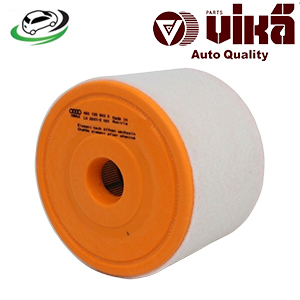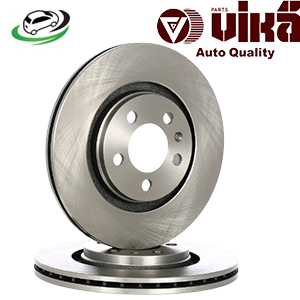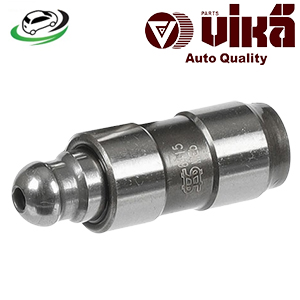-31%
Get Valve Tappet Hydraulic Lifter Audi A1/A2/A3/S3 / VW CC/Golf/Jetta 1.2L/1.4L/1.6 CAVD CBZB 030109423B
Hydraulic valve lifters, also known as hydraulic tappets or lifters, are vital components in an internal combustion engine’s valve train. They play a critical role in maintaining valve clearance, ensuring efficient and quiet engine operation. Understanding the function, types, benefits, common issues, and maintenance of hydraulic valve lifters is essential for appreciating their role in modern engine performance and reliability.
Structure and Function of Hydraulic Valve Lifters
Hydraulic valve lifters are cylindrical components that sit between the camshaft and the valve stem or rocker arm. They use engine oil pressure to automatically adjust and maintain proper valve clearance.
Components of a Hydraulic Valve Lifter
- Body: The main cylindrical part that fits into the engine block or cylinder head.
- Plunger: Moves up and down within the body, driven by the camshaft.
- Spring: Located inside the lifter, it helps maintain contact between the plunger and the camshaft.
- Check Valve: Allows oil to flow into the lifter but prevents it from flowing out, maintaining pressure.
- Oil Chamber: Holds the oil that is used to adjust the lifter’s position.
Function in the Valve Train
The primary function of hydraulic valve lifters is to maintain zero valve clearance, which means there is no gap between the lifter and the valve stem or rocker arm when the valve is closed. This is achieved through the following process:
- Oil Filling: Engine oil is pumped into the lifter’s oil chamber through the check valve.
- Plunger Movement: As the camshaft rotates, it pushes the plunger up, which in turn pushes the valve open.
- Oil Adjustment: Any excess clearance is taken up by the hydraulic action of the oil inside the lifter, ensuring continuous contact with the valve mechanism.
- Constant Adjustment: The lifter automatically adjusts to changes in temperature and wear, maintaining optimal valve operation.
Types of Hydraulic Valve Lifters
Hydraulic valve lifters come in various types, each suited to different engine designs and performance requirements.
Standard Hydraulic Lifters
Standard hydraulic lifters are the most common type, designed for general automotive use. They provide reliable and maintenance-free operation, making them suitable for everyday driving conditions.
Roller Hydraulic Lifters
Roller hydraulic lifters feature a small roller at the point of contact with the camshaft, reducing friction and wear. These are commonly used in high-performance and modern engines due to their ability to handle higher rpm and loads.
Variable Valve Timing Lifters
These advanced lifters are part of variable valve timing (VVT) systems, allowing for dynamic adjustment of valve timing based on engine speed and load. This improves engine efficiency and performance across a wider range of conditions.
Benefits of Hydraulic Valve Lifters
Hydraulic valve lifters offer numerous benefits that enhance engine performance, efficiency, and longevity.
Automatic Adjustment
One of the primary benefits of hydraulic lifters is their ability to automatically adjust valve clearance. This eliminates the need for manual adjustments, reducing maintenance requirements and ensuring optimal valve operation.
Reduced Noise
Hydraulic lifters help reduce valve train noise by maintaining continuous contact with the valve mechanism. This leads to quieter engine operation, improving overall driving comfort.
Improved Efficiency
By maintaining proper valve clearance, hydraulic lifters ensure efficient valve operation. This improves engine performance, fuel efficiency, and emissions control.
Increased Longevity
Hydraulic lifters reduce wear on the valve train components by maintaining proper clearance and reducing friction. This extends the lifespan of the engine and its components.
Common Issues and Maintenance of Hydraulic Valve Lifters
While hydraulic lifters are designed for durability, they can experience issues over time. Regular inspection and maintenance are crucial for ensuring their proper function.
Signs of Worn Hydraulic Lifters
- Tapping Noise: A tapping or clicking noise from the engine can indicate worn or malfunctioning lifters.
- Poor Performance: Decreased engine performance, rough idling, or misfires can be signs of lifter problems.
- Excessive Valve Lash: If there is noticeable valve lash (gap between the valve and the lifter), the lifters may not be functioning correctly.
Maintenance Tips
- Regular Oil Changes: Clean engine oil is essential for the proper functioning of hydraulic lifters. Regular oil changes help prevent sludge and debris buildup that can affect lifter performance.
- Use Quality Oil: Using high-quality oil and the recommended viscosity helps maintain proper hydraulic lifter operation.
- Periodic Inspection: Regularly inspect the lifters for signs of wear or damage, especially in high-mileage engines.
- Engine Flush: Occasionally performing an engine flush can help remove deposits and sludge that may affect lifter performance.
Advances in Hydraulic Valve Lifter Technology
Modern advancements in hydraulic valve lifter technology have led to improved performance, durability, and efficiency.
Enhanced Materials
The use of advanced materials, such as hardened steel and advanced alloys, enhances the strength and durability of hydraulic lifters. These materials are designed to withstand the stresses and high temperatures of modern engines.
Precision Engineering
Improved engineering and manufacturing techniques have led to more precise and reliable hydraulic lifters. Advanced machining processes ensure tighter tolerances and consistent performance.
Integration with Modern Engine Technologies
Hydraulic lifters are increasingly integrated with advanced engine technologies, such as VVT and cylinder deactivation systems. These integrations improve overall engine efficiency and performance.
Follow us on Facebook for more parts.



